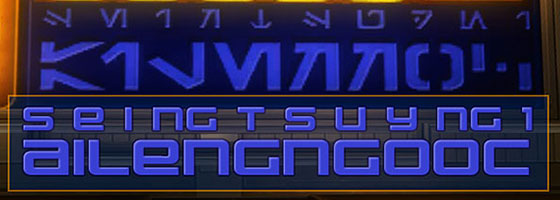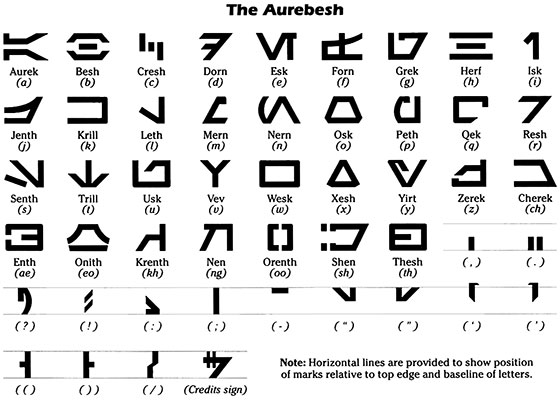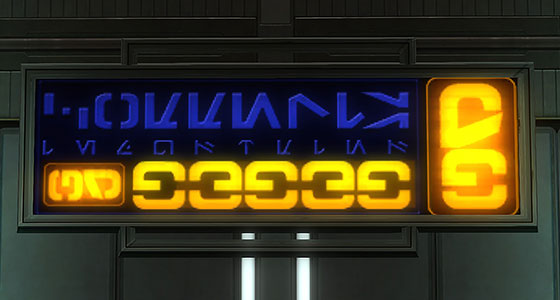As February ends, gentle reader, I am once again turning in my work at the last possible second. All I can say is that this month definitely did not work out the way I’d planned.
This time, I’ve chosen to take a fresh look at one of the very first translations I made for this blog, and make a more faithful recreation this time around. Given its translation, you will likely not be shocked to learn that this sign can be found most commonly on the planet Corellia. Amusingly, the blue text contains a spelling error. It’s not the only one in the game, but it’s also a common error, one I’ve made myself, so I’m happy to let it slide. The orange text is another example of seemingly random single or paired letters that are seen frequently in holographic neon around the galaxy, and the use of the letters “G” and “Z” are a common popular choice for numerous signs and displays in the game. For the blue text, I followed the original’s use of capital and lower case letters, but for the line of orange, single glyphs I opted to reflect the capital “G’s” rather than alternate it with a lower case “g’s” in order the better match the poster’s original design.

There are several aspects to this seemingly simple sign that make translation a bit more tricky that it might seem at first glance. My initial translation nearly five years ago was completely nonsensical because technically this writing is not Aurebesh. To the best of my knowledge this alphabet has not been formally identified in Star Wars canon, but it is actually the second attempt, after Aurebesh as we know it, to recreate Joe Johnston’s original alien alphabet created for the original trilogy. The particular font used here is likely Erik Schroeder’s Galactic Basic. The giveaway that the font used is not formal Aurebesh is actually the use of glyphs which in Aurebesh are two-letter digraphs. As Aurebesh has evolved over the years, the digraphs have been used less and less over time or repurposed as other symbols. In SWTOR when you see an Aurebesh digraph you can usually assume the font being used is not Aurebesh.

As fake space letters go, I continue to find the evolution of Aurebesh interesting. There are many, many issues with its original, official presentation. The punctuation is incomplete, and there are no numbers or rules for capitalization. Over the years, different fonts, very often created by fans, have filled in the gaps and fleshed it out in ways beyond its original intention. The overall effect of this is that Aurebesh feels rather like a living “language” with weird oddities and quirks that real alphabets develop through generations of use across vast distances. Aurebesh, from the very beginning, was never intended to be THE singular alphabet of the Star Wars universe, just one of many. (including our own English alphabet). In Star Wars: The Old Republic, this diversity of languages and scripts can be found around the game world, and eagle-eyed gamers will spot Huttese/Outer Rim Basic, Naboo Futhork, ancient Jedi and Sith runes and most recently Mandalorian alongside the familiar Aurebesh.
UPDATE! I just noticed a spelling error of my own in my recreation. I’m tempted to claim this is an intentional homage to the error in the original and totally not a basic mistake by yours truly. You be the judge!

